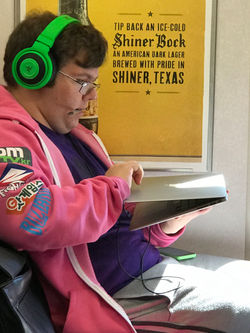

 |  |  |  |
|---|
The Production Process
While it may seem pretty simple to create a film; make a script, record with a decent camera and microphone, put all of it into an editing software and a few hours later, you have a decent film. This is far from the truth when trying to make a film, especially when you have a film group that makes full-length documentaries, as well as high-quality short films to show off at different film award competitions. That's why Gnetics makes sure everything we do for each film is at high-quality to present the best movies at the end.
Scripting
Before a great film can be made, its got to have a great script to work with in order for the idea of the film to be seen by everyone. Gnetics makes sure the idea is great enough to be a feature on the big screen of a cinema. When the idea is passed by the team or by a set group of members of the team, the presenter of the idea gets to work right away at making a script with one person helping to polish out the script. This aspect of filming is important to get down so it'll be easy for the production team of the film to follow along with the film and give the cameraman less work to do as he has clear instructions on what to do for each shot. This also helps actors to convey each act properly for each shot of the film.


Filming
After the script is finished, it's time to move onto filming the scenes the script has laid out for everyone in the film to follow. Not only does this help the production team understand what segment they are in the film, it's extremely helpful for the cameraman to know what he has to film and where to film it. Using high-quality 4k cameras and high-quality microphones, each shot of the film is done wonderfully, making the film amazing with each film that Gnetics makes. For documentaries, the cameraman still needs to know what to do for each documentary should they need to zoom into the interviewee more closely or switch to a different angle when asked a different angle, to give the documentary more dynamic movement to it, even when in the actual shot no one is really moving that much.


Editing
After filming is all said and done, it's time to move onto the editing process of filmmaking, by far one of the most difficult processes to do when making high-quality films. When all the footage is put into the editing software, the editor sorts through all of the footage to find the right clips to use for the film, place it into its correct spots in the timeline and have it transition smoothly. There's also the process of correcting audio and color in each of the shots, and setting the right kind of tone for each shot. Editing takes time, especially on our full-length documentaries with 50+ hours of footage to sift through. When all of the editing is complete, it's exported and uploaded online. It is a satisfying feeling to see the film come together with amazing editing to make it a truly high-class film.


Final Review
When the film is finished exporting, the film is put up full screen on a computer or TV if that option is available, and the team watches it for any misses in editing or needs to be corrected more in video or audio. Playing it full screen on a computer or doing it on a TV allows for the group to see how people would watch the film, which gives outside opinions to the editor in case they need to go back and fix parts of the film. Once everyone gave their opinion saying it was good, the video is uploaded to YouTube for everyone to view the video. Should the group members have constructive criticism or suggestions to make the film better, the editor goes back into the editing software and adds in those corrections, making it a better quality film than it was in the first export.
